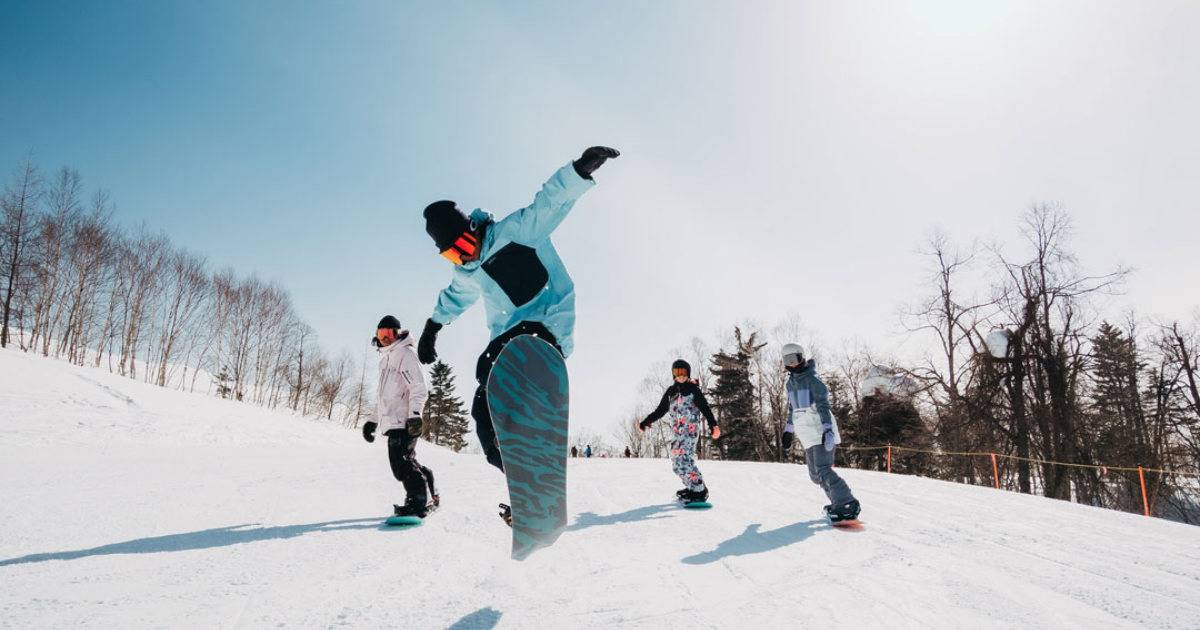Burton Snowboards is distinct among brands: the company helped forge the very sport it serves. Born from the visionary mind of late founder and snowboarding vanguard Jake Burton Carpenter in his Vermont barn, Burton now boasts a global footprint and community of passionate snowboarding enthusiasts.
In 2020, Burton established a new brand ambassador program alongside its thriving professional team rider program. The company’s digital team wanted to tap into the rising influence of social media and authentic stories from everyday snowboarders. Their aim: expand audience reach and deepen customer connections to the legendary Burton brand.
Burton’s Global Digital Content Manager Chas Truslow chatted with Greenfly about the company’s growing brand ambassador initiative. And how they’ve streamlined communications and rights management to boost the speed of storytelling and consumer engagement.
Greenfly: Burton has had a successful and long-standing professional team rider program in place and introduced a new brand ambassador program alongside it last year. What was the catalyst for that timing, and what were your goals for both of those programs?
Chas Truslow: Burton has had a long, long history of having team riders. They’ve acted as the backbone for our brand in a lot of ways, both pushing the progression of the sport but also helping lead product development, helping us create better snowboards. The ambassador program feels like a natural extension of that.
It’s us looking for people who maybe aren’t top-tier athletes, Olympians, or the like. But rather, people who are community leaders, helping snowboarding as a whole to be a more inclusive and inviting community. It’s something that has been in the works for a while, and last year just coincidentally happened to be the year where all the cards fell at the right time.
How would you describe the Burton brand, and what audiences are you trying to reach?
Burton is unique in the sense that we not only make snowboards, our founder was one of the sport’s pioneers. For us, it’s really important that we continue to help push the sport, culture and community forward. The biggest thing we’re after is connecting with people who share our vision and passion for the sport.
How does authentic content from the riders and ambassadors help the Burton brand?
It’s not really about the content they create, but it’s more about the stories they tell. What they create naturally, fits within our brand and reflects our brand values. Whether they’re making it or we’re making it or working together on it. This seamless collaboration on content helps create more native and authentic stories on our social channels.
What has been the process of selecting ambassadors and sourcing them?
We first launched our ambassador program in the U.S. and Canada, so we worked closely with the teams in those regions to identify potential ambassadors. We sought out finding people who aligned with our brand’s mission, who are active members within their snowboard scene and who are helping their community. They’re not professional snowboarders; some are backcountry guides, or others are content creators, but most importantly, they’re all community leaders. We’re also working on international ambassadors right now and will be rolling those out in Europe, Australia and New Zealand in the coming year.
What challenges have you had in working with the ambassadors and team riders?
We’ve had a big issue where we’ve seen ambassadors or riders post something on their social feeds, and then we have to go and hunt it down. Whether it’s trying to get the rights or just getting a hold of them, sometimes it can be a hard thing, especially since they’re generally traveling or in the wilderness. Also, maintaining assets and having them in a central place where people can access them for all of our teams. It used to always feel like a game of telephone. A lot of legwork for something that Greenfly thankfully was able to put in one place for everyone to access.
Has having ambassadors create content helped you with the speed of storytelling? And is that important for you in your business?
One-hundred percent. Being able to showcase what’s happening in the moment is what social is all about. You can plan and plan as much as you want, but at the same time, you need to be part of the conversation that’s happening in the moment. Having a way to collect and distribute that content very easily is very valuable and helpful in telling those stories and keeping your finger on the pulse of what’s going on.
How has the Greenfly platform changed how you tell the brand’s stories and your relationships with the ambassadors?
Being able to leverage more native content has allowed us to tell our stories in what I feel is a more authentic and relatable way. It’s not necessarily reactive, but just not something that was shot a year ago or something like that. It feels recent.
I would say a majority of the communication that I experience with our ambassadors is through Greenfly, whether it’s them just dropping photos and videos in and me asking them questions. Or the times that we’ve requested specific images from them, almost all of my point of contact with them is through Greenfly.
How important is rights management to this process?
It’s huge. It’s something that, as user-generated content becomes more and more prevalent, it’s important for us to track. Five years from now, who knows what could happen. Someone could use an archival image, and tracking down those rights with just a username attached would be a nightmare. Especially as we want to use this type of content in more places than just social, whether that be on our website, across our channels globally and email, having that rights management is peace of mind.
How has the UGC played into your strategy?
Last year, we had a brand campaign that was solely focused on social. We had certain brand themes we were consistently hitting on, but we didn’t always have the photos/videos to support them. Especially with COVID, it was difficult to go out and capture content in a timely manner. So we began to use UGC as a way to tell these stories and craft narratives around what our customers, athletes and ambassadors were posting to their accounts. This workflow is something that I think we’re looking to do in the future.
How do you see your ambassador program further evolving?
This is a program that we’re committed to and want to expand. We know that there are people already identified that could become official ambassadors and users in Greenfly in the future. And we want to continue the mission of making a better snowboard community, pushing our sport forward by helping and working with ambassadors to tell that story and reach our overall goal.
In closing, what’s the biggest thing you’ve learned in building the ambassador program?
Finding people who are an authentic fit for an ambassador program is the most important thing. And when I say that, I mean asking yourself, “Does this person represent the values that our brand stands behind naturally?”
There’s no point in an ambassador that’s solely there because their follower count is high. They generally need to be very transparent about their motivation and interest in the sport and brand. I think social media has become more and more all about authenticity. It’s going to continue to be the driver of how brands tell stories. It’s a mutual partnership, and having both parties have a common goal is what’s most important.
Interview edited for clarity and length.
Photo: Courtesy of Burton

